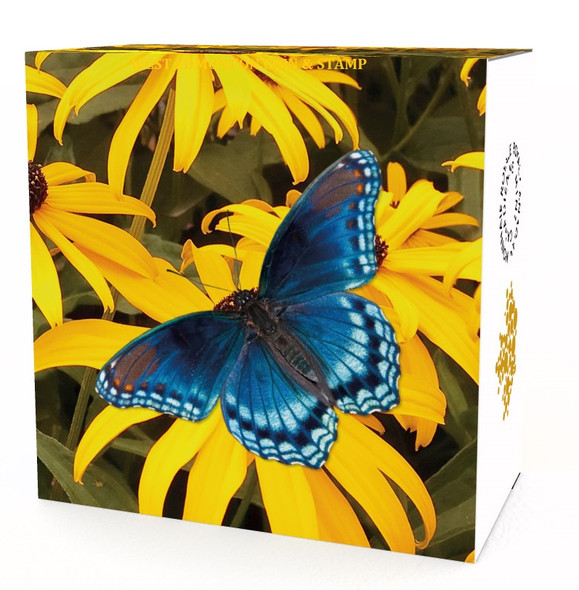Description
2014 $20 FINE SILVER COIN- DINOSAURS OF CANADA:
SCUTELLOSAURUS
Theme:
The second coin in the Royal Canadian Mint’s exciting new series featuring portraits of prehistoric animals discovered in Canada!
Description:
The reverse image features an interpretation of what the Nova Scotian ornithischian (a small, bird-hipped dinosaur) may have looked like if similar to Scutellosaurus. The scientific accuracy of the depiction was verified by palaeontologists of the Royal Tyrrell Museum of Palaeontology.
Viewed from its left side, Scutellosaurus shows rows of hundreds of armoured “scutes” that cover the entire upper portion of its body, from the back of its head to the tip of its exceptionally long tail. Its narrow head turns toward the centre of the image, facing the viewer with its right eye. Its short but muscular forelimbs suggest that it was only bipedal part of the time, at other times resting or walking on all fours. Long, lithe hind limbs end in large three-toed claws while its long narrow tail—possibly used as a counterweight to its heavily armoured body as well as a counterbalance for feeding and moving on its hind feet—curls out into the background in a graceful curve. The scientific name, “SCUTELLOSAURUS,” is, uniquely, sunk into the coin.
Special Features:
- Only the second pure silver Royal Canadian Mint coin to feature a full, non-skeletal portrait of a dinosaur.
- Second in a series of silver coins featuring finely engraved, lifelike representations of prehistoric animals and dinosaurs discovered in Canada.
- A limited mintage of 8,500 coins and highly popular subject matter, combined with exceptional engraving and design, mean that this coin is sure to be a favourite among collectors and gift-givers alike.
- This coin features a proof finish and is beautifully enhanced by select finishes that highlight the textures of the dinosaurs body.
- The brilliantly polished latin name is sunk into the coin, as if carved into rock.
Product Specifications:
Item Number:127200
UPC:6-23932-05101-0
Face Value:20 dollars
Mintage:8,500
Composition:99.99% pure silver
Weight (g):31.39
Diameter (mm):38
Edge:Serrated
Finish:Proof
Certificate:Serialized
Artist:Julius Csotonyi
Packaging:
Coin is encapsulated and presented in a Royal Canadian Mint branded maroon clamshell case lined with flock and protected by a black sleeve.
Finished Size: 67 mm x 67 mm
Advertising Date: November 5, 2013
Launch Date: November 5, 2013
Complete Certificate Text:
The Mysterious Case of the Nova Scotian Ornithischian Though the current Canadian landscape is geologically recent, the landmass has teemed with life for hundreds of millions of years. Clues to the life story of our land and the creatures that once lived here lie encased in rock and earth. Solving the mystery of how they lived and died has captivated Canadian researchers and laypeople for over a century.
Fossils are surprisingly uncommon, and complete fossils are extremely rare; thus, palaeontologists often need to gather knowledge from many other scientific disciplines to understand the evidence they uncover. Palaeontologists carefully study and interpret findings to arrive at a well integrated hypothesis of what the lifestyle of a fossilized creature could have been. Technology offers help in documenting and dating fossils, but palaeontologists’ most important tools are meticulous research, creativity, logic and patience.
Nova Scotia’s Bay of Fundy region is famous for preserving rocks of Late Triassic and Early Jurassic age–the dawn of the Age of the Dinosaurs. Although footprints left by dinosaurs are commonly preserved there, fossil bones are extremely rare and generally fragmentary. Among these specimens are isolated teeth providing strong evidence for the presence of a small bipedal ornithischian dinosaur during the Early Jurassic. Because the teeth of all known primitive herbivorous, “bird-hipped” dinosaurs look very similar, it is difficult to identify the exact species, or reconstruct what the animal looked like, based on teeth alone. However, similar-aged fossils found elsewhere in the world can shed light on the identity of the Nova Scotian ornithischian. Very few Early Jurassic ornithischians are known around the world, the best-known being Lesothosaurus from South Africa and Scutellosaurus from Arizona. Because Scutellosaurus is the only small ornithischian known from the Early Jurassic of North America, palaeontologists can hypothesize that the Nova Scotia teeth may have belonged to Scutellosaurus. However, they must remain open to the possibility that the teeth could be from a different animal. Since all of the continents were still connected during the Early Jurassic, dinosaurs were free to roam and it is possible that animal species from Africa could also have been present on the landmass that now forms Nova Scotia.
Translated as “little shield lizard,” Scutellosaurus was named by American palaeontologist Edwin H. Colbert in 1981. The Early Jurassic herbivore reached 1.2 m in length, had an extremely long tail, and was covered by hundreds of small pieces of bony armor (called scutes) along its neck, back, and tail. Its forelimbs and hands were relatively long, suggesting that it was probably able to alternate between a bipedal and quadrupedal stance. Unlike more advanced ornithischians, the teeth of Scutellosaurus were positioned near the edge of the jaws, indicating that it lacked well-developed cheeks to keep food in its mouth while chewing. Based on its bony armor and other characteristics of its skeleton, it is believed that Scutellosaurus may have been an early ancestor of ankylosaurs and stegosaurs – the armoured dinosaurs.













